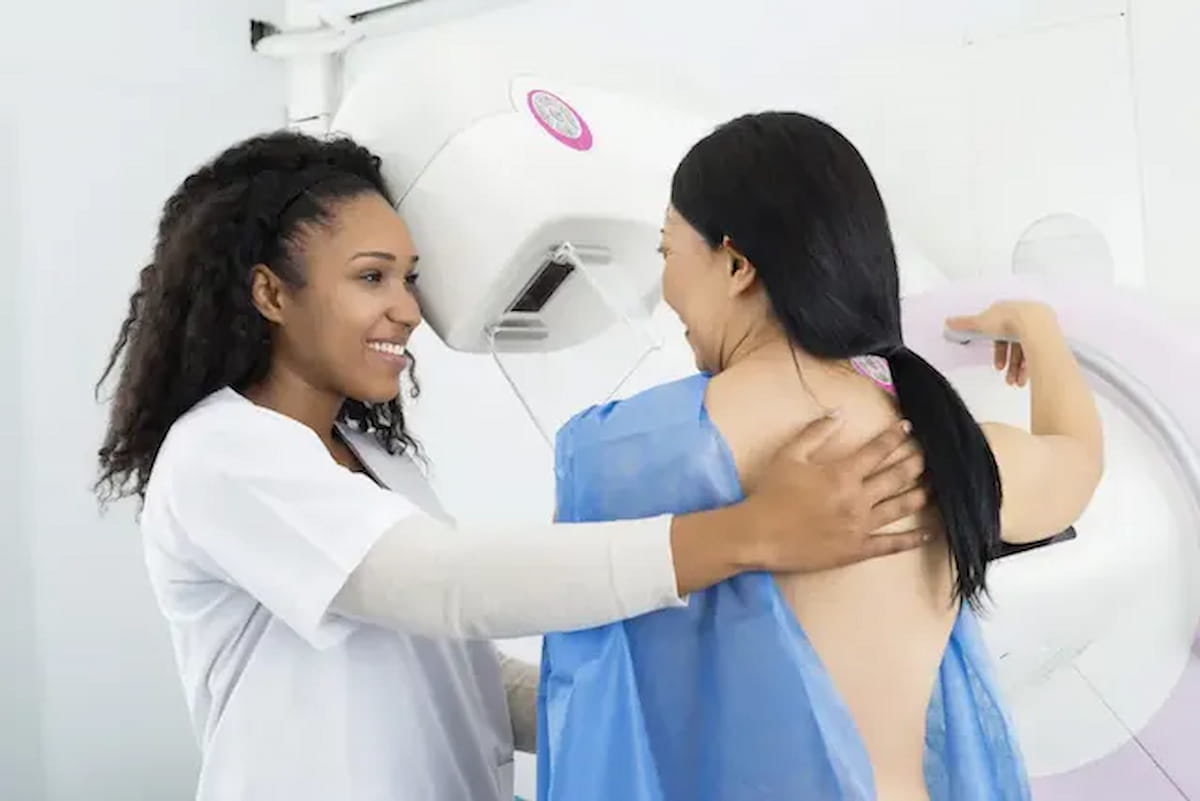New research demonstrates that same-day diagnostic services after abnormal mammography findings are significantly less likely to occur for minority women in comparison to White women.
For the retrospective study, recently published in Radiology, researchers reviewed data from 1,123,177 women (ranging between 40 to 89 years of age) who underwent a total of 3,519,502 screening mammography exams between 2010 and 2020. The cohort was comprised of White women (68 percent), Black women (12.7 percent), Asian women (10.3 percent), Hispanic women (6.5 percent) and women from other races/ethnicities (2.2 percent), according to the study.
In comparison to White women, the study authors found that Black women were 44 percent less likely, Hispanic patients were 39 percent less likely and Asian patients were 26 percent less likely to have same-day follow-up diagnostic service after having abnormal results on screening mammography exams.
“ … We found that availability of on-site diagnostic services has not ensured the receipt of same-day services at similar rates across sociodemographic groups. The number of same-day examinations performed was low, and it is not known whether the facilities included in our analysis offered same-day diagnostic services on an ad hoc basis or through a formal program. Additionally, it is not known whether differences in receiving same-day services reflect patient preferences or other factors,” wrote lead study author Marissa B. Lawson, M.D., who is affiliated with the Department of Radiology at the University of Washington School of Medicine in Seattle, and colleagues.
The researchers also noted disparities with follow-up imaging and imaging-guided biopsies within 90 days of abnormal mammography findings.
Hispanic or Latinx patients were 29 percent less likely than White women to have a follow-up breast MRI during this time period, according to the study authors. The study results also revealed that Asian women were 28 percent less likely and Black women were eight percent less likely to have follow-up breast MRI 90 days after an abnormal mammogram.
The use of MRI-guided biopsy during the 90-day period was 27 percent less likely to occur with Hispanic or Latinx women, 17 percent less likely occur with Black patients and 14 percent less likely among Asian women in contrast to White women, according to the study authors.
While acknowledging a lack of clarity as to which facilities offered same-day biopsy services on a routine basis, the study authors noted no evidence to suggest that the availability of diagnostic services factored into the aforementioned disparities, a finding they said falls in line with previous research.
“ .. Our findings provide additional evidence that the availability of diagnostic services at the individual’s screening facility is not a contributing factor to differences in the receipt of same-day diagnostic services and the subsequent immediate resolution of abnormal screening findings,” said Lawson and colleagues.
Three Key Takeaways
1. Racial disparities in same-day diagnostic services. Minority women, including Black, Hispanic, and Asian patients, are significantly less likely to receive same-day follow-up diagnostic services after an abnormal mammogram compared to White women.
2. Delayed follow-up imaging and biopsy. Minority women also experience delays in follow-up imaging (such as breast MRI) and imaging-guided biopsy within 90 days, which may contribute to later-stage cancer diagnoses and worse outcomes.
3. Need for systemic improvements. The disparities are not solely due to the availability of diagnostic services but may be influenced by scheduling inefficiencies, insurance coverage issues, and patient-provider communication gaps. Enhancing workflow and education could improve access to timely care.
(Editor’s note: For related content, see “Mammography Study Suggests DBT-Based AI May Help Reduce Disparities with Breast Cancer Screening,” “New Study Finds Racial Disparities with Pre-Op Breast MRI and Positive Surgical Margin Rates” and “Study: Use of Preoperative MRI 46 Percent Less Likely for Black Women with Breadt Cancer.”)
While Lisa A. Mullen, M.D., praised the size and diversity of the cohort evaluated in the study, she noted a lack of detail on patient and facility factors that may have impacted use of same-day diagnostic services.
In an accompanying editorial, Dr. Lawson emphasized the need for improved education for patients and referring providers, enhancements in patient scheduling and better knowledge about insurance coverage.
“Providing same-day diagnostic imaging and/or biopsy is challenging for breast imaging centers and requires a shift in both mindset and workflow. Given the potential benefit of decreasing disparities in access to breast imaging care, breast imaging centers should consider not only increasing availability of same-day services but also optimizing operational workflows to facilitate same-day services,” emphasized Dr. Mullen, an associate professor in the Breast Imaging Division of the Department of Radiology and Radiological Sciences at the Johns Hopkins University School of Medicine in Baltimore.
